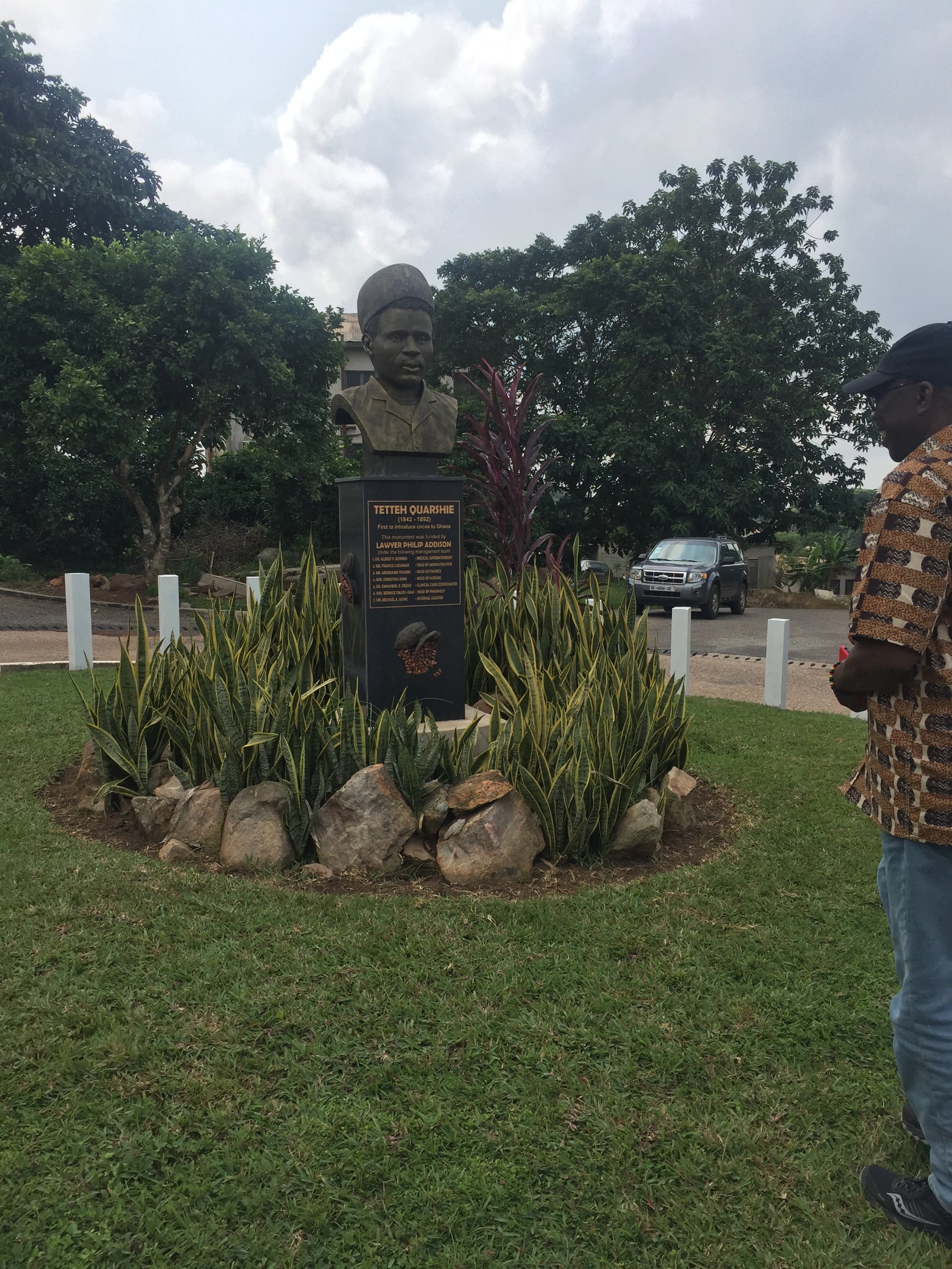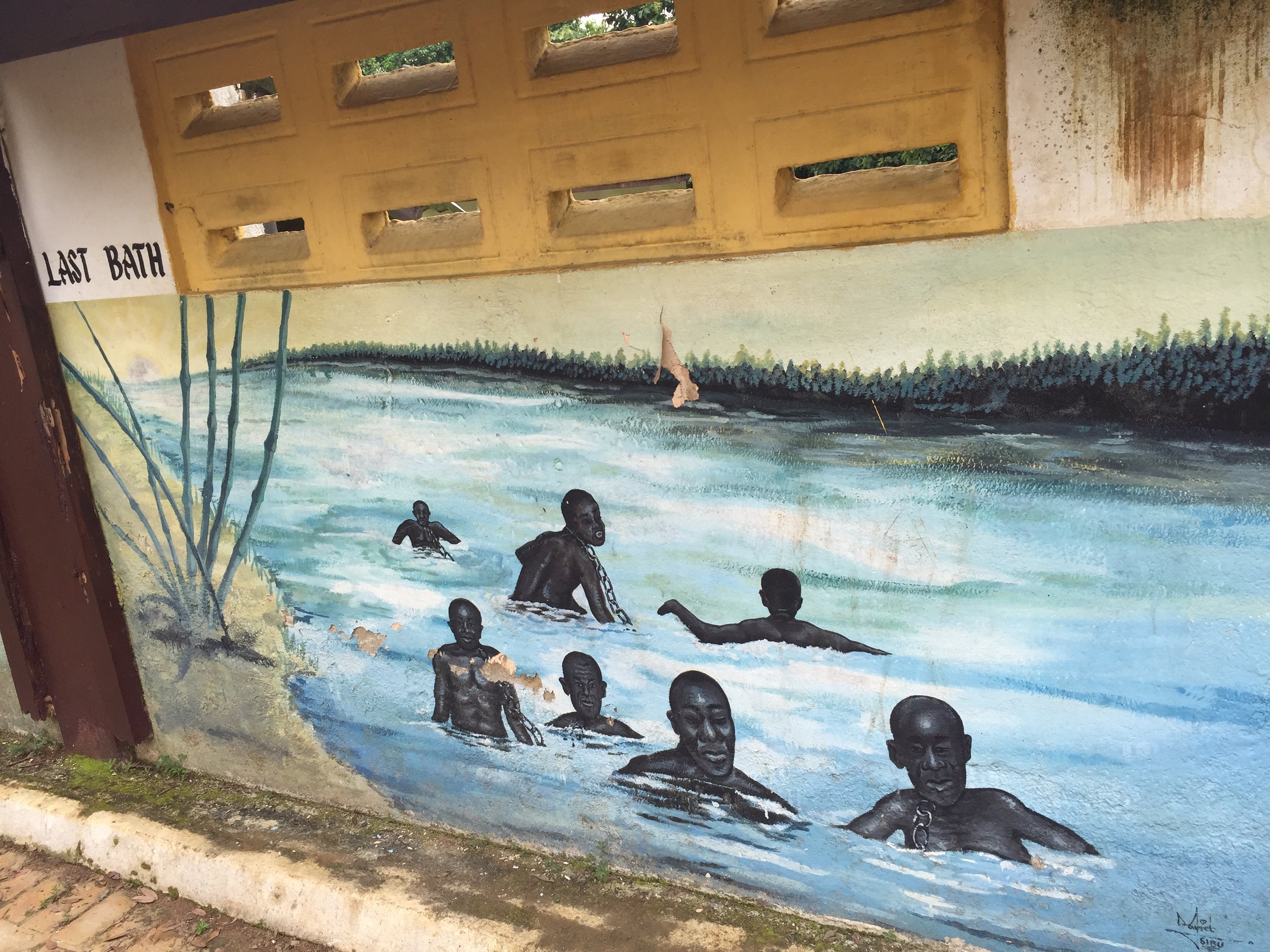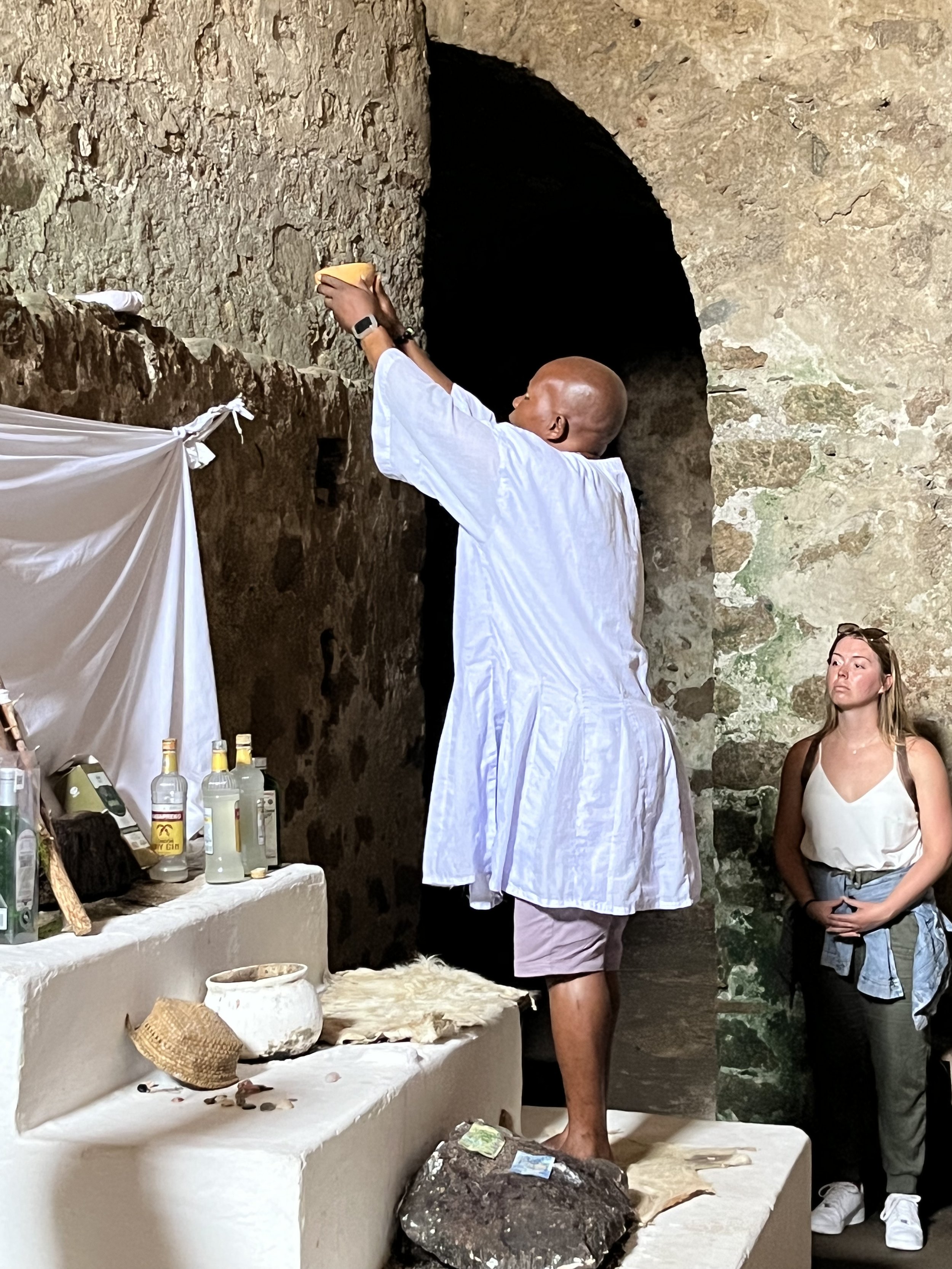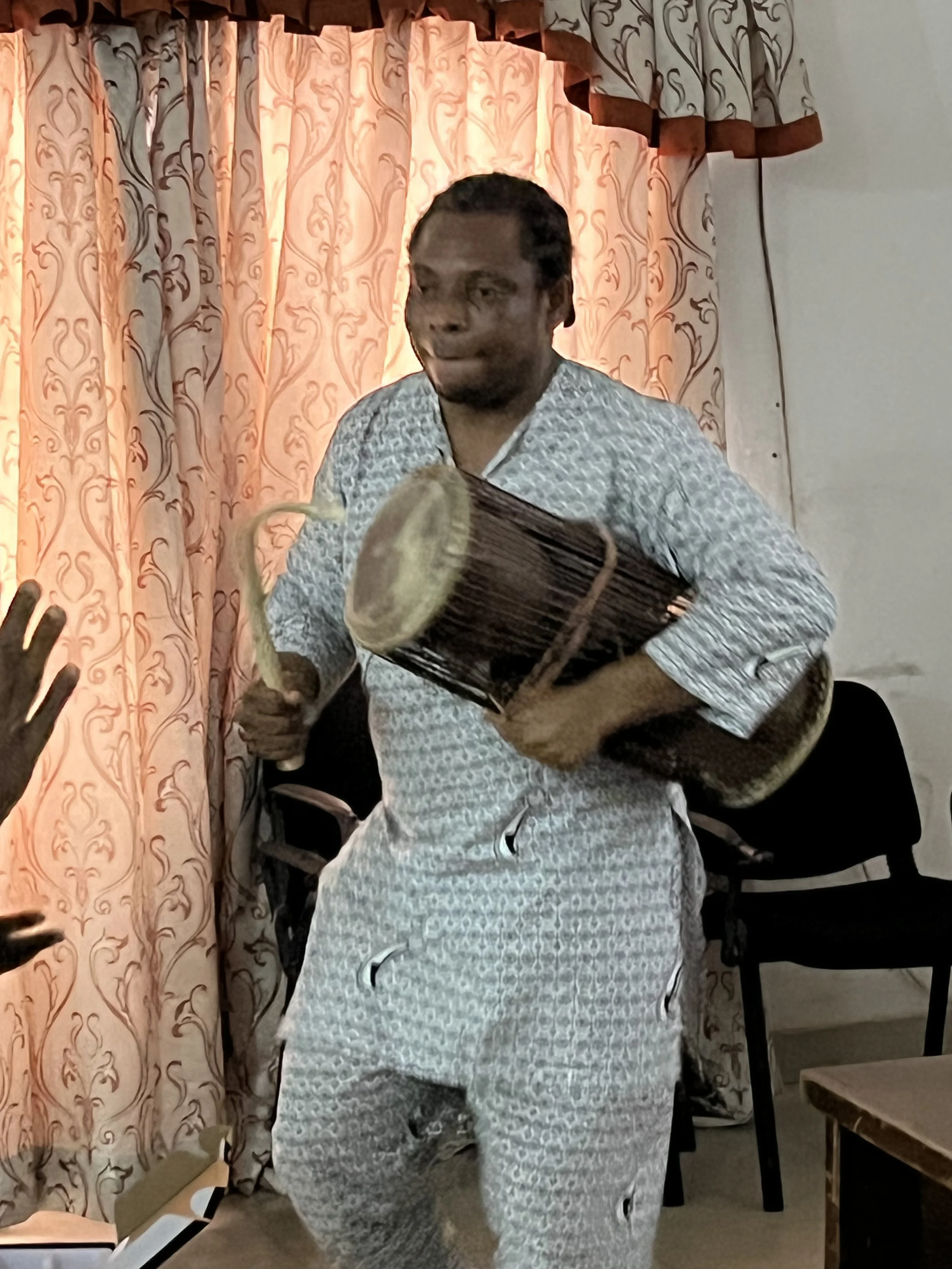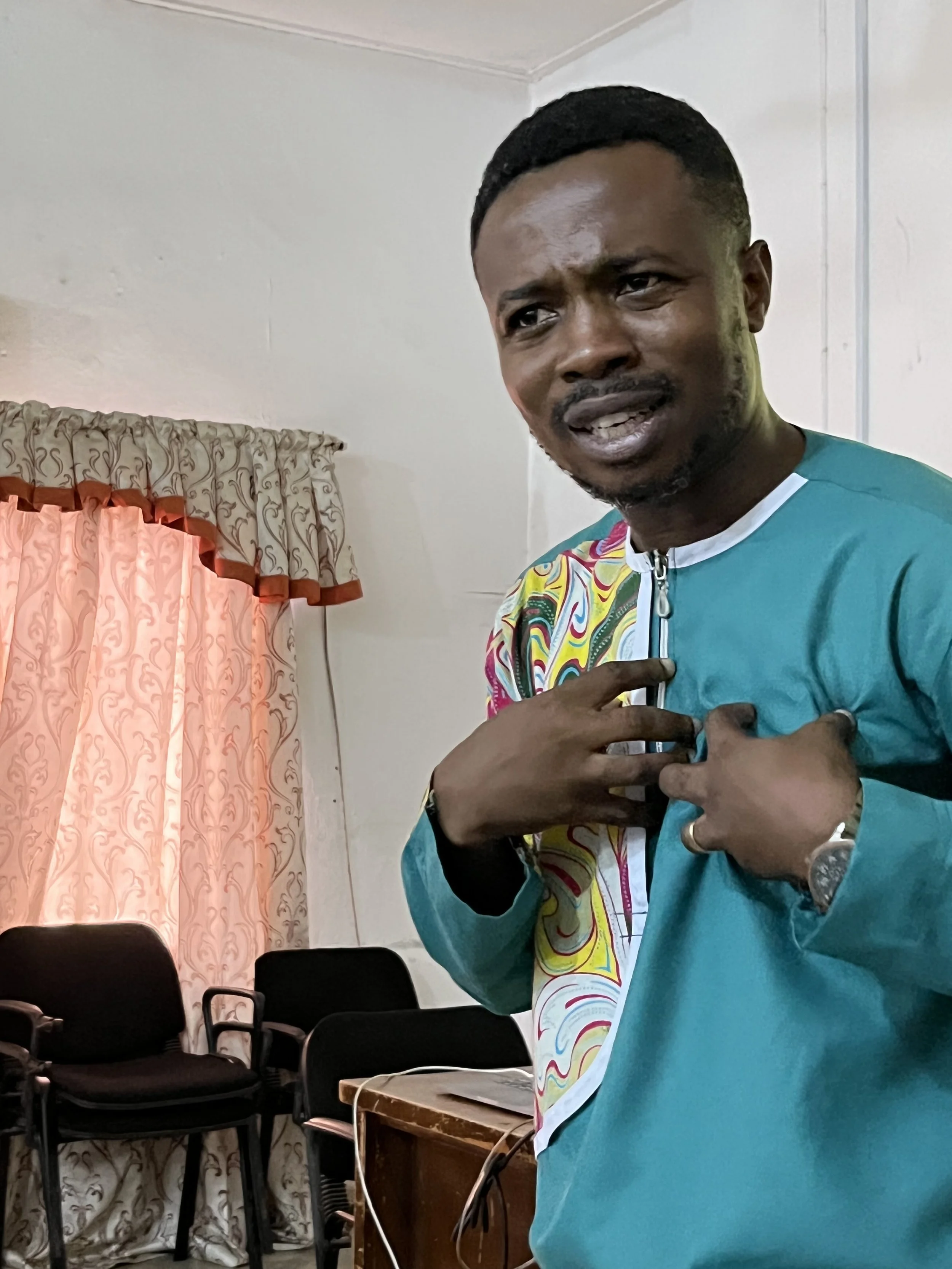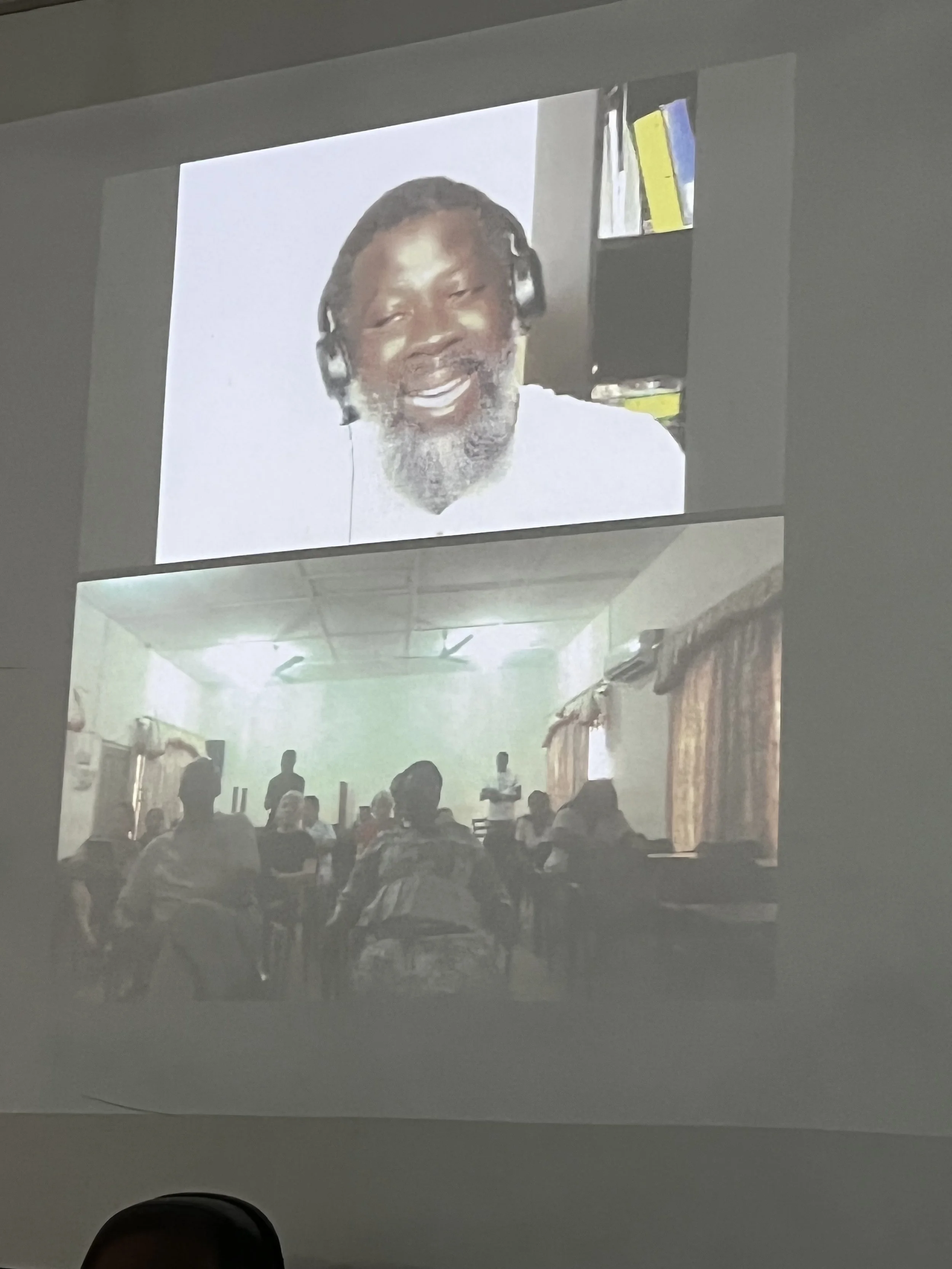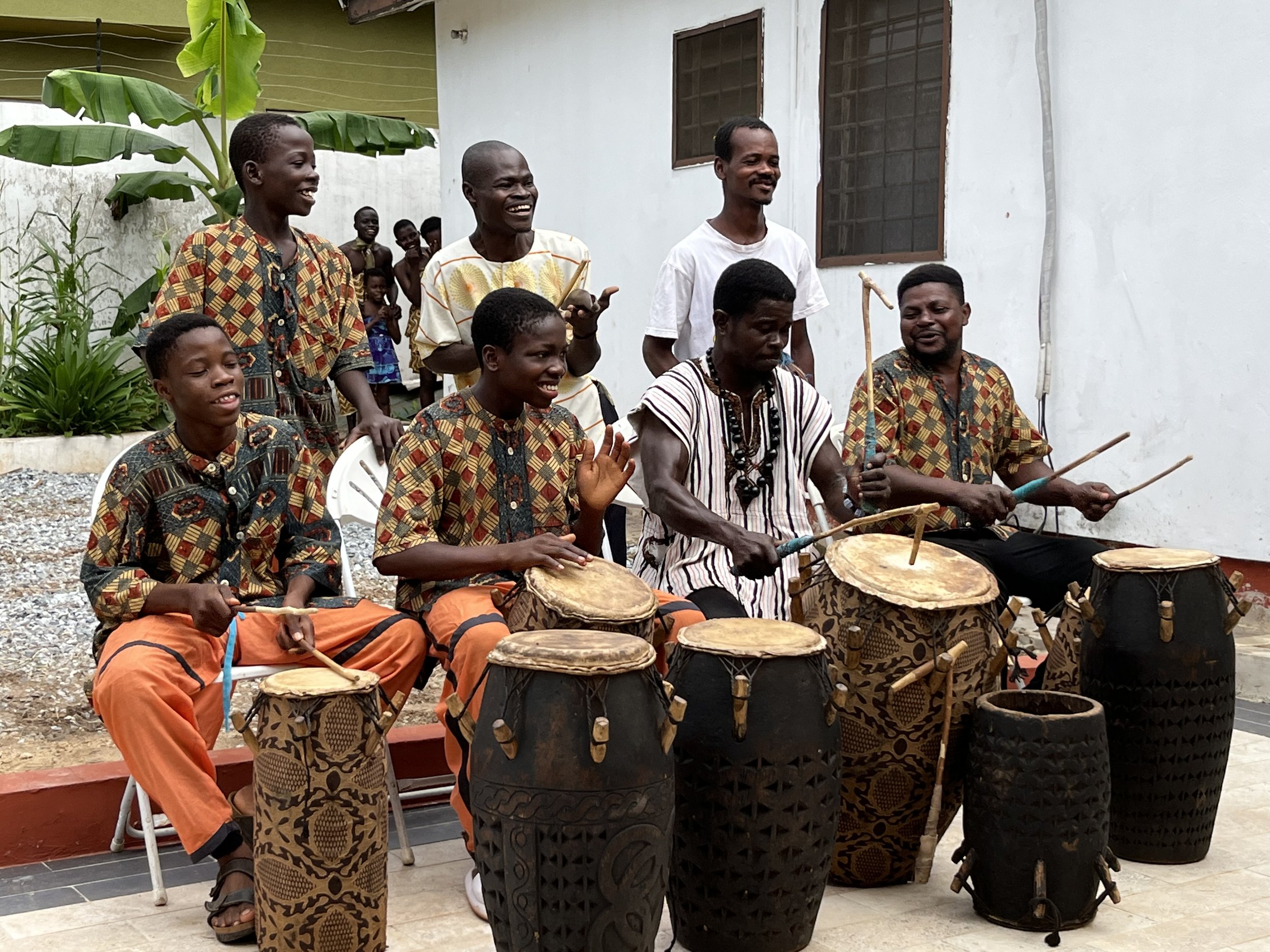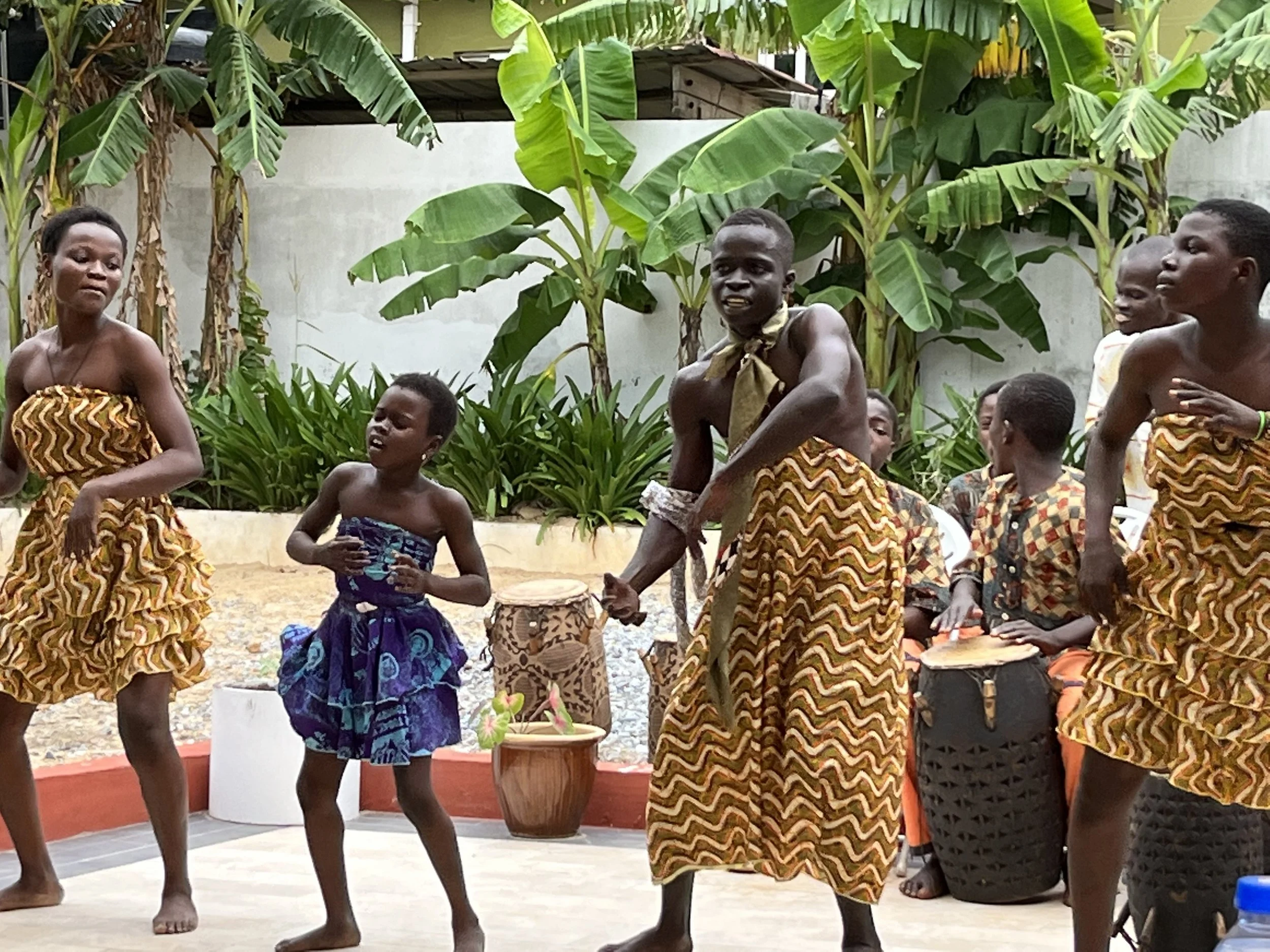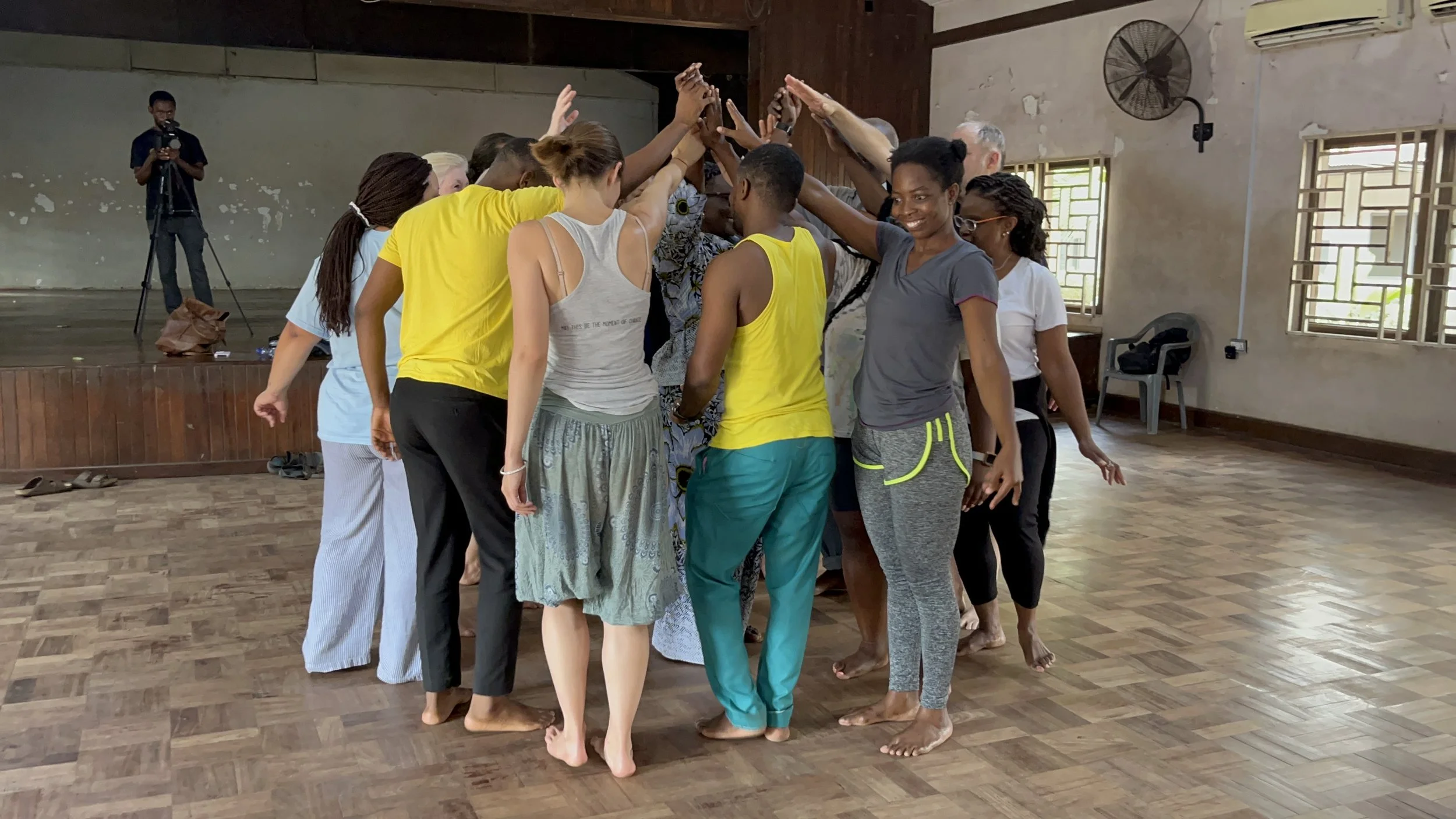I am Kwasi Daniel Agyei, and I teach Mathematics at Kpohe D/A Basic School in Accra. Here are my reflections on Ghanaian Spirituality.
ANANSE AKURAA (The Spider’s Village)
In Ghana, Spirituality plays a role in daily life. As part of the WTIG program, we have had many sessions where we have discussed Spirituality, but during our visit to Ananse Akura (The Spider’s Village) I experienced and felt it deeply. Prof Pash Obeng and Prof Obiri-Addo, who efficiently filled in for Professor Asare Opoku the guru and creator of the beautiful forest preserve and place of healing called Ananse Kwae, guided us through meditation and questions to great understanding.
At Ananse Akuraa, my eyes were opened to a deeper form of spirituality. Each plant and tree has some meaning and purpose. Ghanaian Spirituality reminds us that everything was created in the image of Onyame or Nyame (God or the creator). Many people believe that only humans were created in the image of God, but on the trip to Ananse Akura, I realized that all of nature - the trees, the animals, the sky, mountains, the rivers are created in the image of God. Nature should be respected and honored in the same manner in which we honor humankind. This is an important belief of Ghanaian and most African Spiritual beliefs.
Everything seen around us is a representation of the supreme being. Time is calibrated by nature. Everything is connected. Death is connected to birth. According to a Ghanaian proverb, if there is no death, there is no birth. This is a lesson we were reminded of as we walked the sacred ground at Ananse Akuraa.
The development of spirituality requires some intentionality, practice or discipline in order to make ‘spiritual progress'. This involves contradictory statements like “the gateless gate” or coming home to oneself. Contemplative practices such as prayer and meditation are the common denominator of many religions and the foundation of spirituality. Without these, personal spiritual growth can be slower and elusive. At Ananse Akuraa, we were inspired to “live life like a prayer”.
The program began with a naming ceremony by a leader of the Gã people, the original inhibitors of Accra.
Spiritual development often involves our awareness of events around us- often spontaneous happenings that cannot be accounted for scientifically and that may be attributed to an external force, for example: grace, or angelic or divine interventions. Ananse Akuraa also teaches me that I am the architect of my own life. (a moment from present to death) and that every happening, event or lack of can be attributed to the workings and benevolence of Nyame, the supreme being.
TETTEH QUARSHIE
In a circle at Mampong Hospital which is near Ananse Akura, is a statue honoring Tetteh Quarshie. Tetteh Quarshie was a Ghanaian agriculturalist who was the first to expand the production of the crop in Ghana. He brought Cocoa to Ghana from Fernando Po (now Bioko in Equatorial Guinea) in 1879. It has been 140 years since he first brought Cocoa beans to Ghana. Some people are of the view that Tetteh Quarshie swallowed cocoa beans to smuggle them into the country. We now accept that he came back with six ripe cocoa pods hidden in his toolbox. As a blacksmith, he kept metals in a toolbox, and inside the toolbox he hid the pods. As a result of Tetteh Quarshie vision and actions, Ghana today is a leading producer of cocoa in the world, and sets the quality standard as a world premium.
Below are other places, during the Witness Tree Institute Program, where I found Spirituality…
DONKOR NSUO (The Slave River)
Donkor Nsuo is located at Assin Manso in the Central Region of Ghana where the slaves where being kept for a while before that are shipped from Cape Coast and Elmira. The captives were encamped for their last bath with African water, in a river known as “Donkor Nsuo”, Slave River.
AGYA KOO NIMO
Agya Koo Nimo (Kwabena Boa Amponsem), is a leading folk musician and regarded as one of the living legends as far as highlife music and palm wine music is concerned. Koo Nimo has performed for the Asante Royal Family in Kumasi. He is not only a musician but a teacher of art, proverbs, and wisdom. He strives to preserve Ghanaian culture through music and the telling of stories, and he is one of the few African musicians whose works are studied in the West African Examinations Council syllabus for music.
By actively sharing and reflecting with other educators from Ghana and the USA with honesty and courage, and by exploring important places like Ananse Akuraa and Donkor Nsuo, and experiencing the wisdom of Koo Nimo firsthand, the Witness Tree Institute has deepened my understanding of my identity, role as a teacher and Ghanaian Spirituality. I am grateful.
By Kwasi Daniel Agyei
Mathematics Teacher at Kpohe D/A Basic School in Accra.





